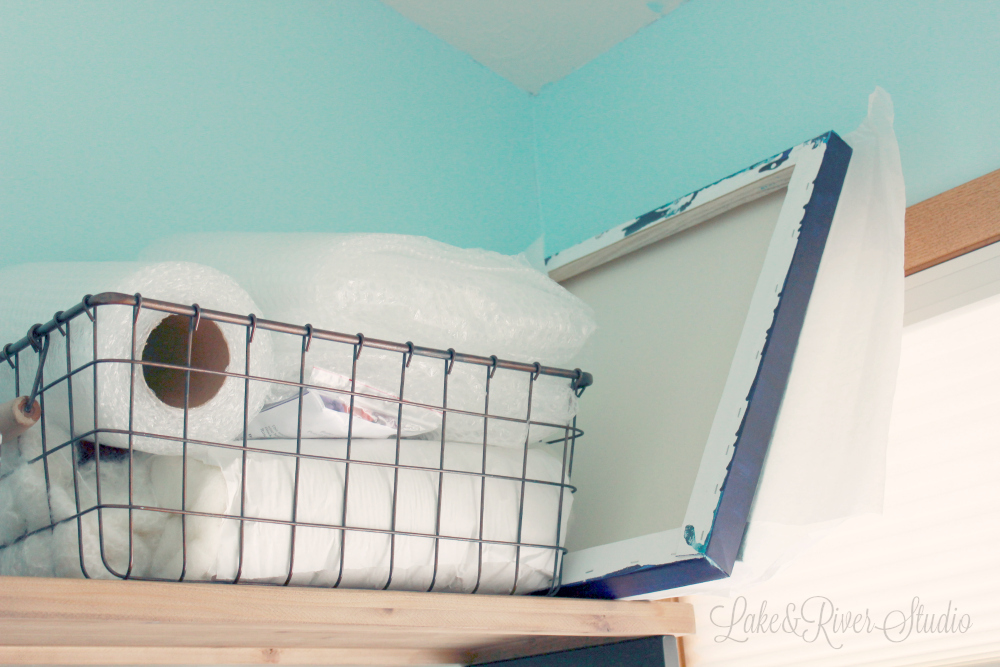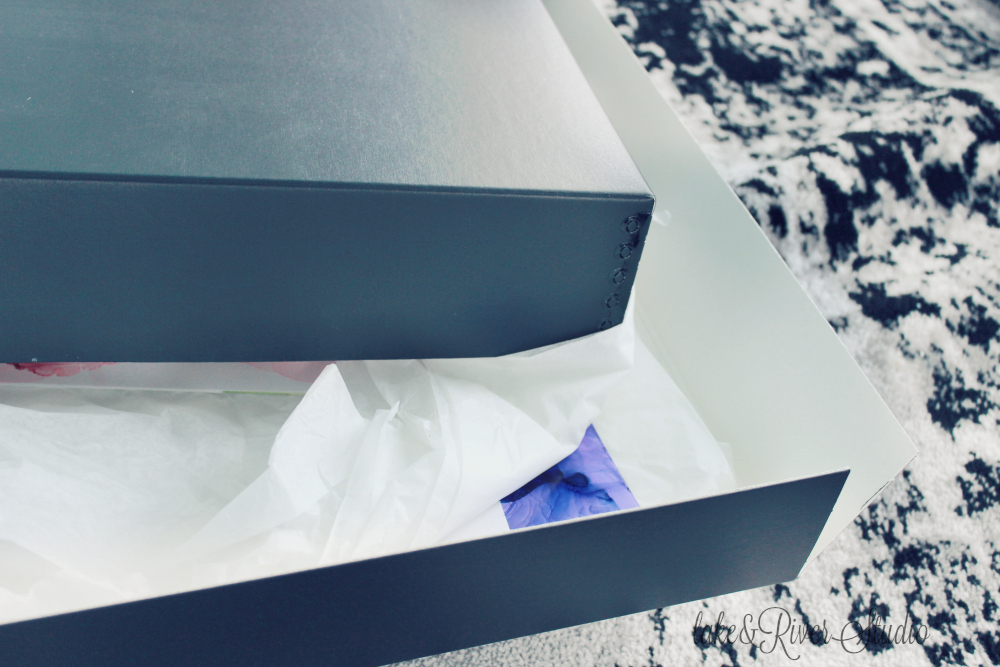 Image via Closet Works
Image via Closet Works
Do you swap out art with the season’s? Or maybe rearrange pieces with redecorating? In any case, I sometimes wonder how many people store artwork at home when it’s not simply stored on their walls.
Properly Storing Art at Home
We’re only going over some basics here. I assume no one is storing priceless 300 year old original paintings in their musty attic. At least I hope not.
If you are an art lover, but not a clutter lover, odds are you might run into a need to temporarily store some of your pieces in your home for a few months or years. Your home art library need not be complicated or fancy, but there are a few factors to keep in mind.

Avoid sunlight
Just like when you hang your pieces, you want to store them out of direct sunlight. Paints, inks, papers, and even UV resistant varnishes can only handle so much light before they suffer from discoloring, brittleness, and general breakdown. Hopefully your pieces are made with archival quality materials, but they will still be biodegradable and can suffer the ravages of environment and time. If your art library has a dedicated room, store pieces on a dark wall. Even if you cover them, you don’t want the heat of the sunlight either.
Control for humidity and temperature to create a moderate climate
Speaking of heat, you want some climate control. Do not store art in attics, garages, storage sheds, or musty basements. In winter, subzero temps can make wood, canvas, and paint eventually become brittle. Especially when it is moist from outdoor humidity. If the humidity and then sinking temps can make your window frames crack, just think of what it can do to stretched canvas or wood panels. Choose a room or closet that has access to heating and cooling so it maintains a moderate temperature year round. If you have central air conditioning, odds are you already keep your home relatively low humidity. The woodwork in your home does better when humidity is below 35 percent, or at least is free from wild fluctuations. Your artwork is similar. Imagine how disheartening it is to pull out paintings covered in mold and mildew after being stored in a damp basement or attic? If you live in a moderate climate in a coastal area, you are lucky enough to have a good start naturally. Those of us in harsher areas have to put a lot more thought into it.

Keep dust to a minimum
This one is more of an issue if you store in an open room. The more you need to clean your artwork, the more likely you are to accidentally damage it. So, take a little precaution to prevent dust build up. You lay prints and works on paper flat in a museum archive box. These boxes are acid free, and keep pieces away from dust, hair, and sunlight. You can purchase them in most art material stores or online. For larger pieces, I would honestly build an open air rack in a room that remains closed much of the time. I don’t recommend wrapping art up in paper and plastic like you do when shipping. Shipping materials are meant to be used short term for protection. In the long term, having a canvas so securely wrapped can cause problems since moisture and dust can be trapped inside the wrapping.
Let it breathe.
If you have a library or studio where you store things of this nature, consider keeping an air purifier running in the room and maybe even a dehumidifier.

Seriously love this painting storage rack setup. Choosing a rack style like this in a dark corner of a tidy room is a great first step.
Overall, store art like you would rare books. If you have a low light wall you use as a book library in your home, that wall might also be a nice place for a storage shelf for artwork.
If you have a lot of pieces that will be leaning against each other, you may want to lay a sheet of acid and lignin free tissue paper between them.
You might also be interested in:
5 Tips For Displaying Your Art
3 Ways To Incorporate More Art Into Your Life

